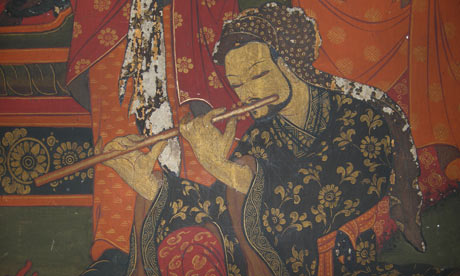Friday, 20th May, 2011: This morning, I attended the opening of the 7th session of the Parliament and to everyones’ surprise (a pleasant one), His Majesty King Jigme Khesar Namgyel Wangchuck, possessing a warm smile, announced his wedding with Jetsun Pema. I almost clapped. The royal wedding is to be held in October this year. It is a joyous day in Bhutan. A welcome news indeed!

Courtesy: http://www.facebook.com/KingJigmeKhesar

Ashi Jetsun Pema (Pic source: Bhutan Observer)
Fri May 20, by Adam Plowright (AFP)
NEW DELHI (AFP) – The 31-year-old king of Bhutan, an Oxford-educated bachelor crowned in the remote Himalayan country in 2008, set up another royal wedding on Friday by announcing his engagement.
Jigme Khesar Namgyel Wangchuck, who helped usher in democracy in the Buddhist nation, revealed his intention to marry 20-year-old student Jetsun Pema during an address to parliament.
“As king, it is now time for me to marry. After much thought I have decided that the wedding shall be later this year,” he announced, according to a copy of the speech sent to AFP.
“While she is young, she is warm and kind in heart and character,” he said of the future queen, who appeared in traditional Bhutanese dress in a joint picture released of the couple.
The announcement clears the way for another wedding in a year of royal nuptials that has already seen Britain’s Prince William marry Kate Middleton in London in an event that captured the world’s attention. Continue reading Bhutan’s 31-year-old king to marry in October 2011


